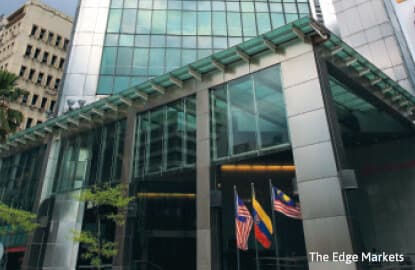
THE history of Lee Rubber Co (Pte) Ltd goes back 90 years to its founder Tan Sri Lee Kong Chian, who set up his first venture in the then Malaya and expanded his business nationwide and regionally.
The company was once among the biggest rubber planters in Southeast Asia, having acres of plantations scattered across the peninsula and supplying rubber to the world. Besides rubber, Lee also planted pineapples and manufactured biscuits. He was also a banker who undertook mergers to form OCBC Bank Ltd.
In 1927, Lee set up a rubber-smoking business called Lee Smoke House in Muar, Johor. A year later, he bought a rubber plantation at the foot of Bukit Timah Hill in Singapore and named it Furong Garden. It was named after the village he was born in Nan’an county, Fujian, China. In the same year, he set up a company called Nam Aik.
According to resources from the National Library Board of Singapore, Nam Aik survived the Great Depression of the 1930s. Lee reorganised his business into a limited company and made two of his friends, Yap Geok Twee and Lee Pee Soo, directors of the company. In 1931, he established Lee Rubber Co.
As land prices were extremely low at the time, Lee bought acres of rubber land and rapidly expanded his business, opening branches in Indonesia and southern Thailand. With the wealth generated from his rubber business, the late plantation tycoon also diversified his business to include Lee Pineapple, Lee Biscuits and Lee Sawmills. He was subsequently dubbed the “Rubber King” and “Pineapple King” due to his vast empire.
Lee was the son-in-law of rubber tycoon and philanthropist Tan Kah Kee, who introduced him to the rubber industry. Tan also brought Lee into the banking business by selling the shares of Chinese Commercial Bank to him. Later, Lee was instrumental in the merger of Oversea-Chinese Bank, Ho Hong Bank and Chinese Commercial Bank to form Oversea-Chinese Banking Corp (OCBC) in 1932.
Lee Rubber still owns extensive land banks in Malaysia. Industry sources say these stretch from Kedah to Johor. The majority of the parcels used to be rubber plantations. However, over the years, Lee Rubber ceased operations at some of its rubber production facilities, ventured into property development and sold some of its land.
A 2008 booklet issued by Iskandar Regional Development Authority says Lee Rubber acquired much of the land it owns in Johor from private landowners in the 1950s. In support of the government’s effort to develop Iskandar Malaysia, the group sold 2,800 acres, adjacent to Senai International Airport, for the development of a national air cargo hub.
In Tampoi, a latex factory was shifted and a new building was constructed to accommodate the largest southern showroom and service centre for Perodua. An old Lee Biscuit Factory made way for a Giant hypermarket.
Lee Rubber is jointly developing Johor Technology Park with Johor Corp and the Employees Provident Fund. This involved 456 acres of land. It also partnered Kuok Group to develop 2,900 acres in Taman Impian Emas via a company called Gunung Impian Development Sdn Bhd.
Lee set up the Lee Foundation in 1952 and Universiti Malaya is said to be one of its beneficiaries. He died in 1967 and left half of his fortune to the foundation. His youngest son Lee Seng Wee died in August 2015 while his eldest son Lee Seng Gee died in May last year. Lee’s second son is now 94.
Save by subscribing to us for your print and/or digital copy.
P/S: The Edge is also available on Apple's AppStore and Androids' Google Play.